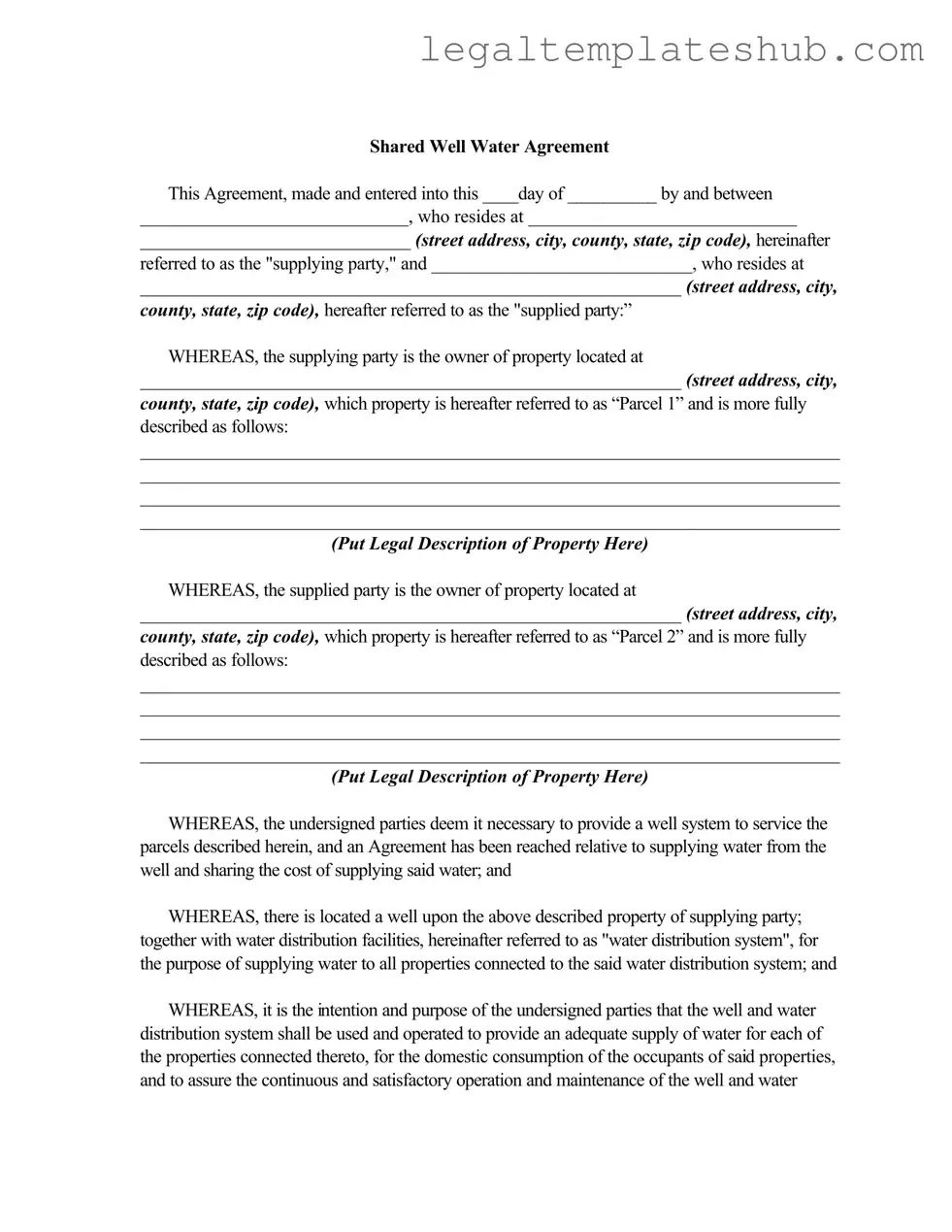Blank Shared Well Agreement PDF Form
The Shared Well Agreement is a legal document that outlines the terms and conditions under which two or more parties agree to share a well and its associated water distribution system. This agreement is essential for ensuring that all parties involved understand their rights and responsibilities regarding the use and maintenance of the well. By clearly defining these aspects, the agreement aims to facilitate a reliable water supply for domestic use while protecting the interests of both the supplying and supplied parties.
If you are ready to establish a Shared Well Agreement, please fill out the form by clicking the button below.
Access Editor
